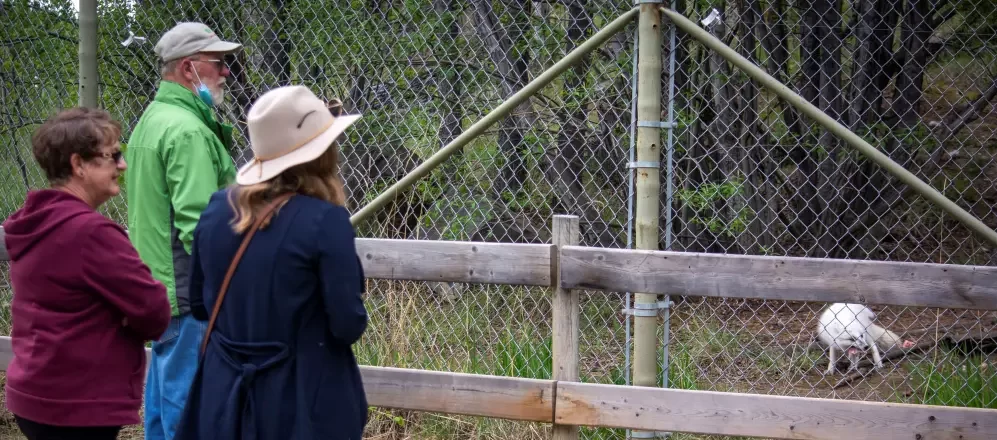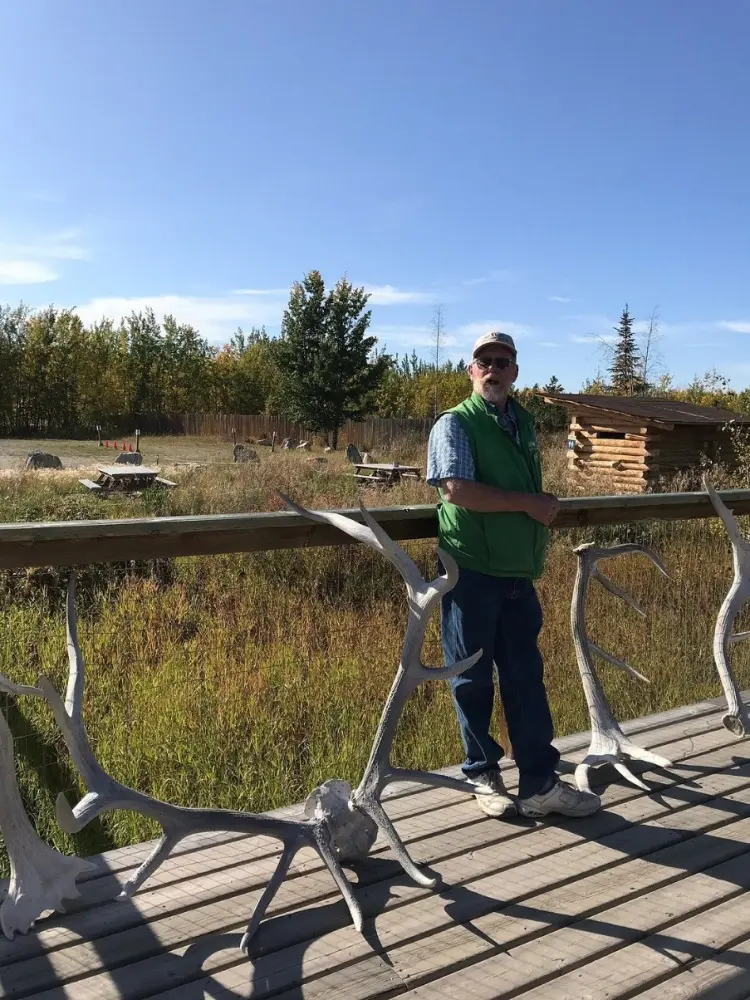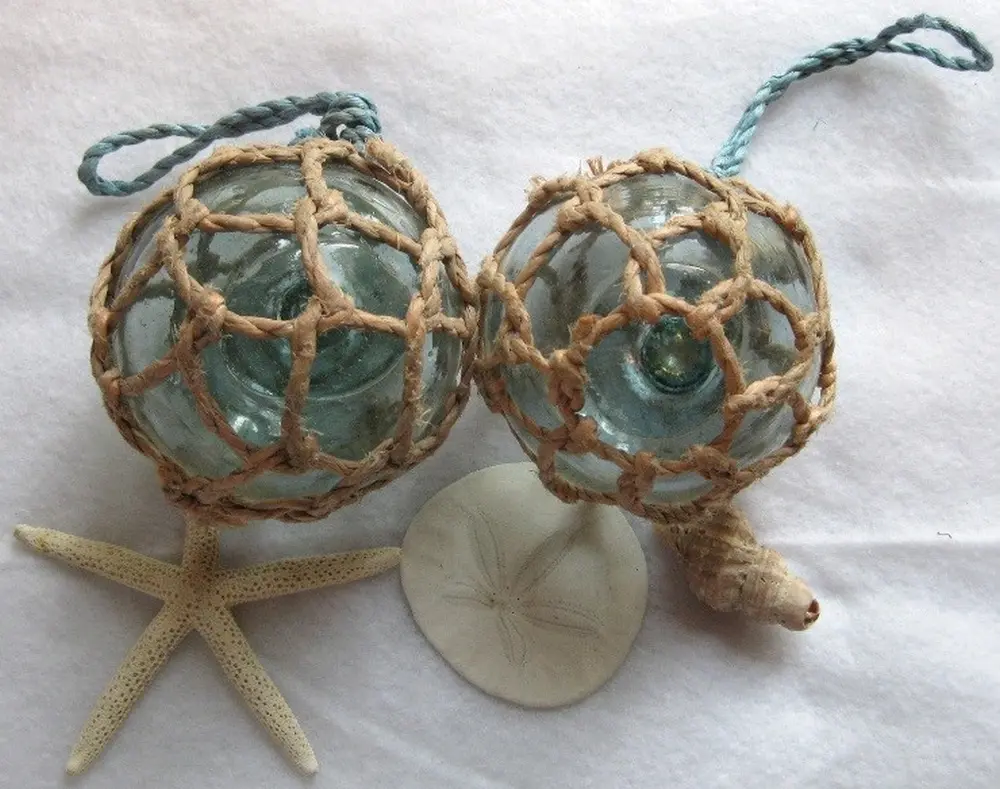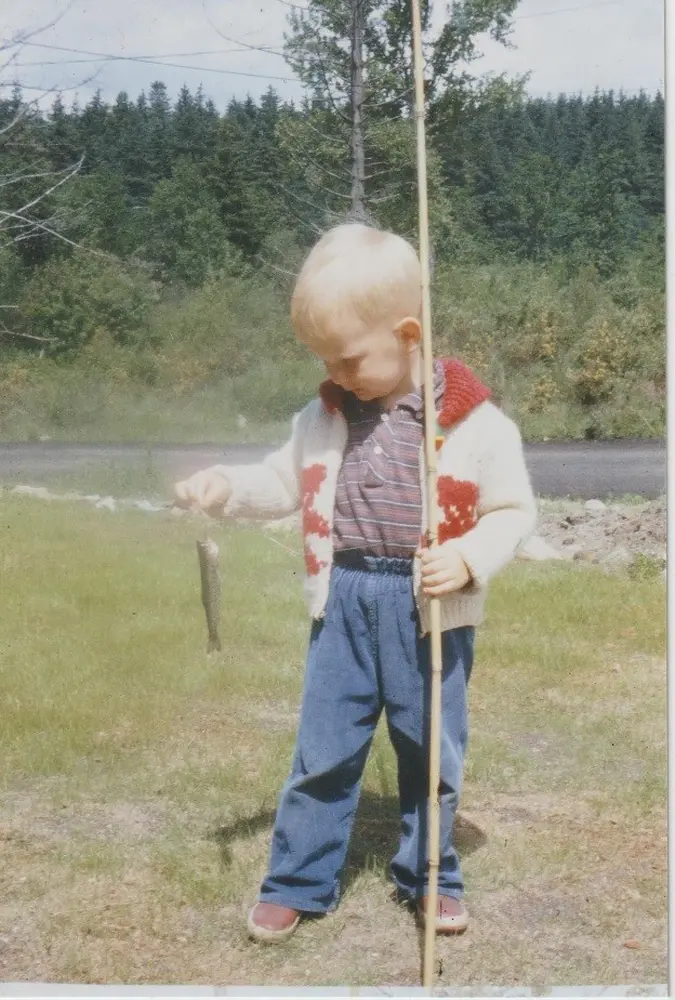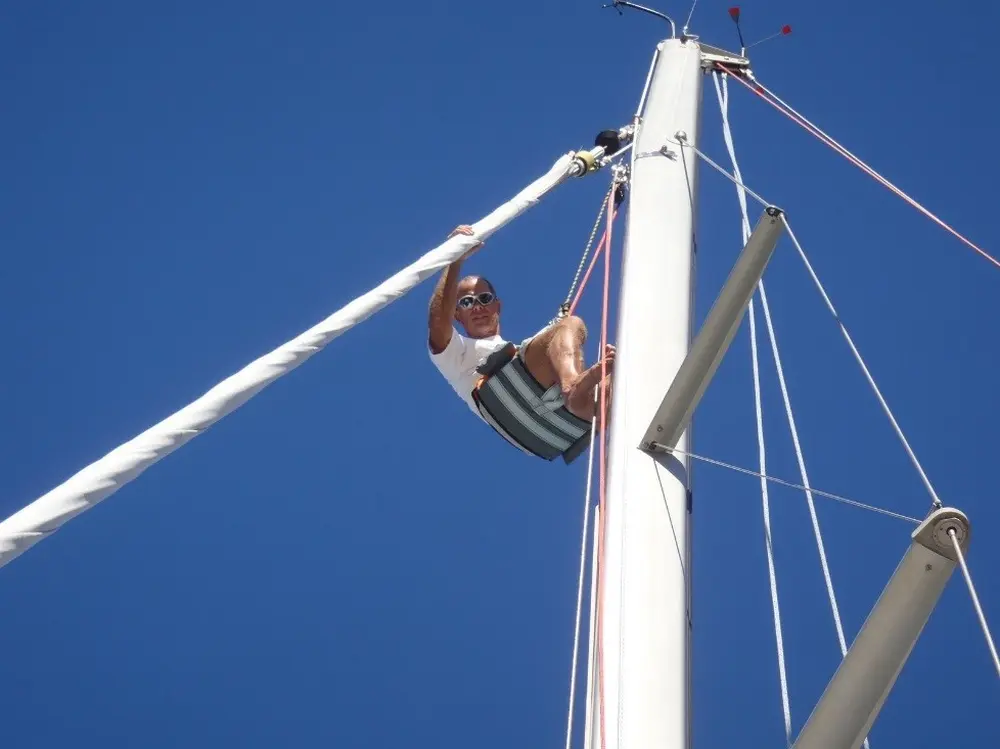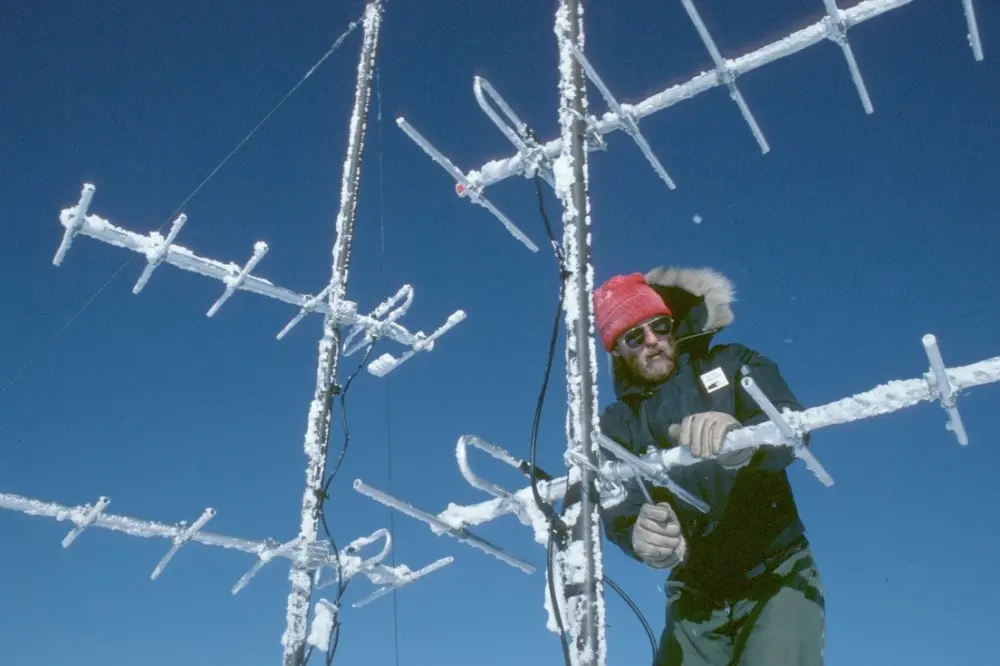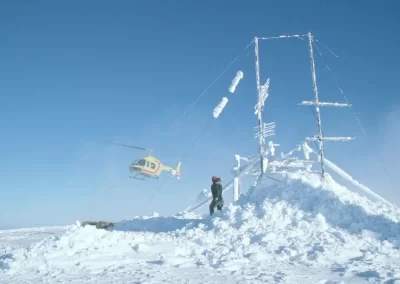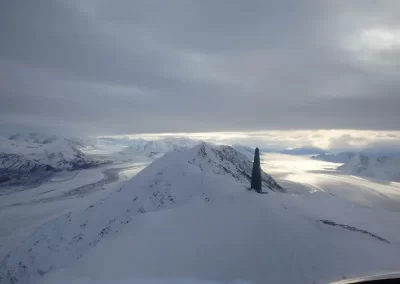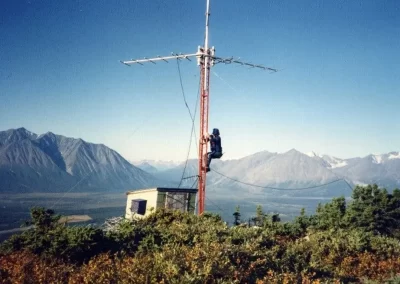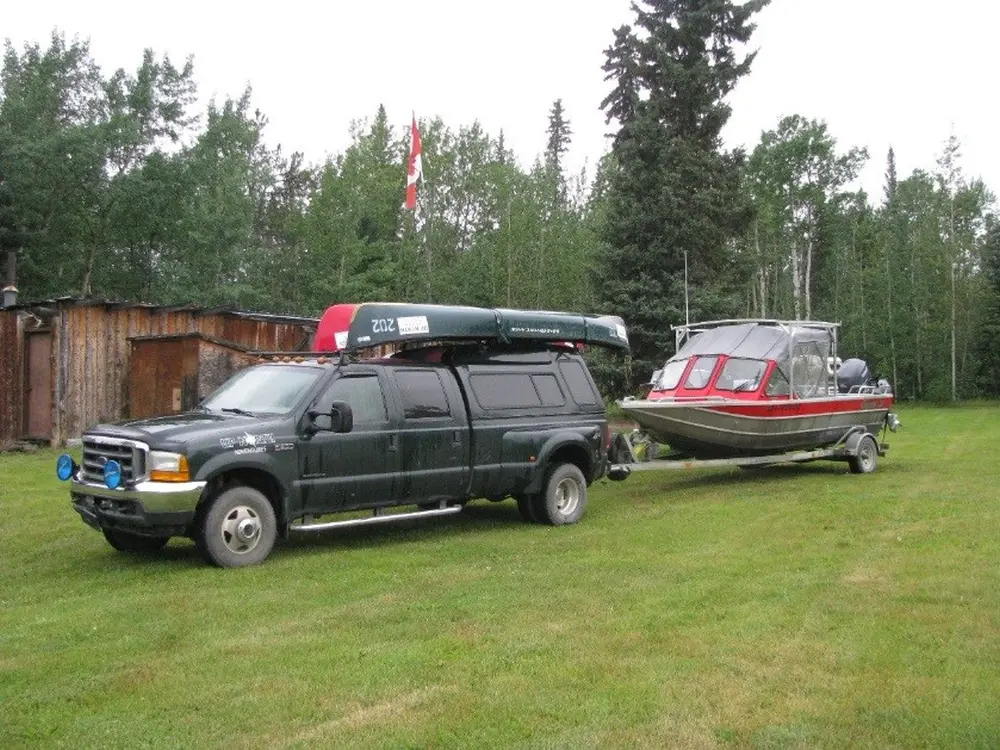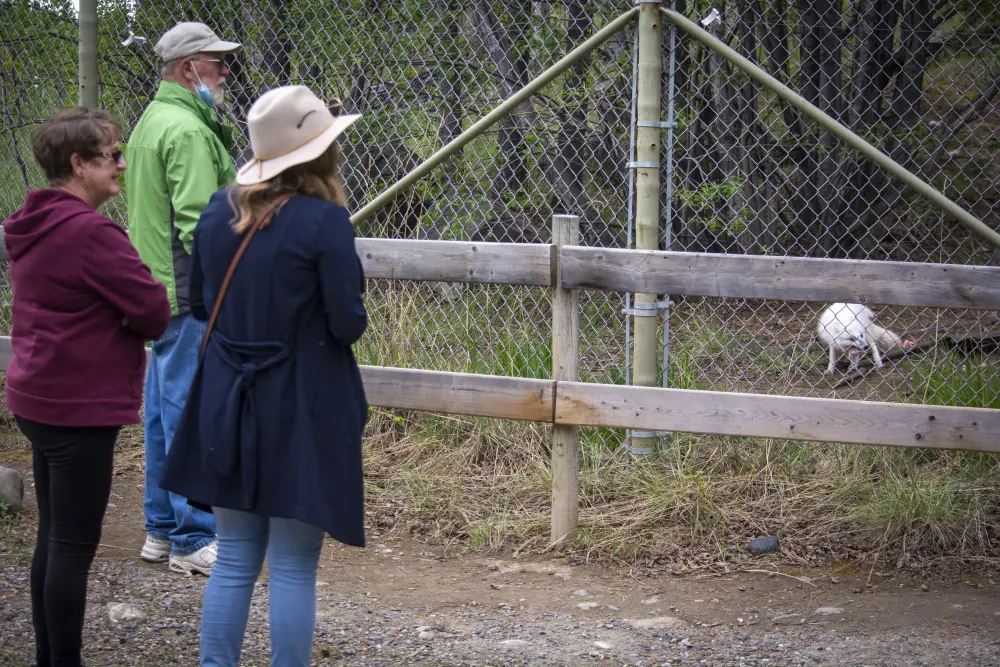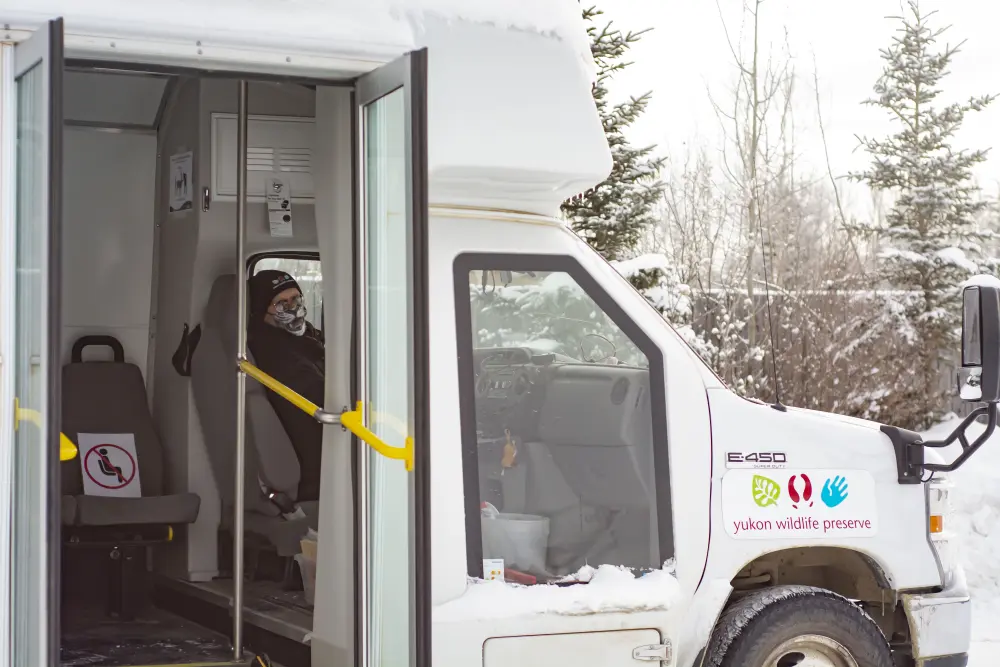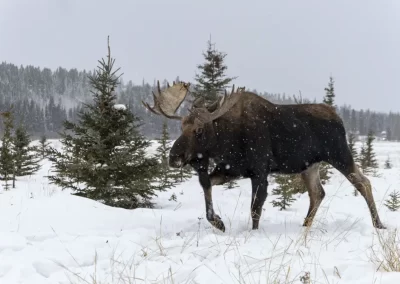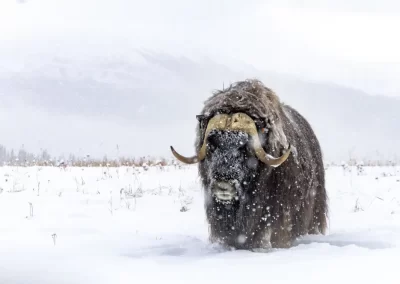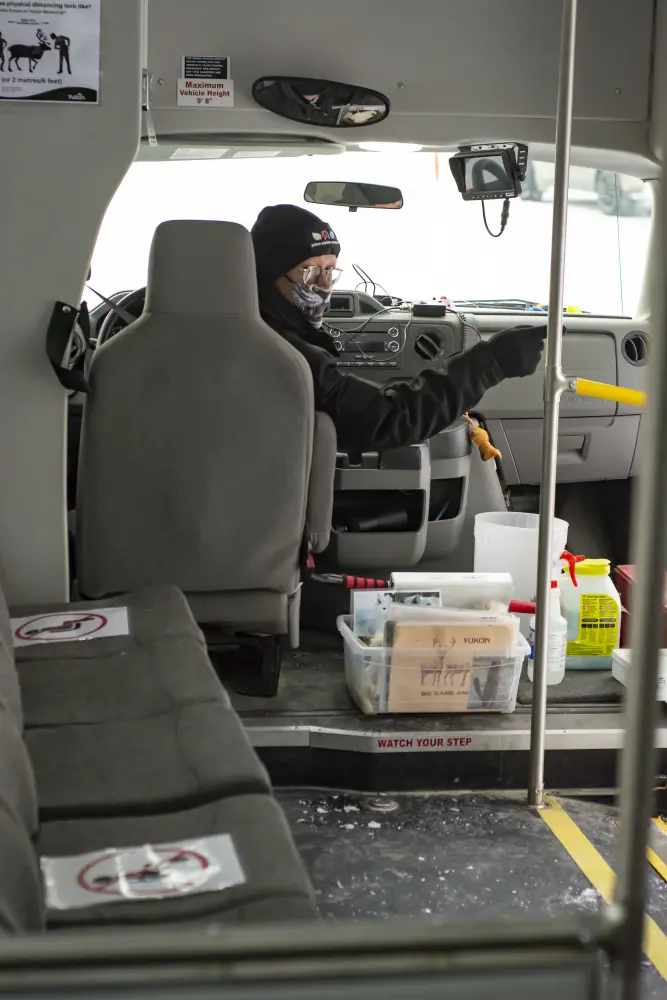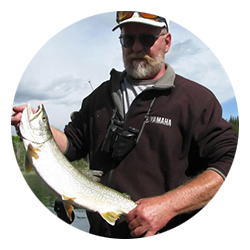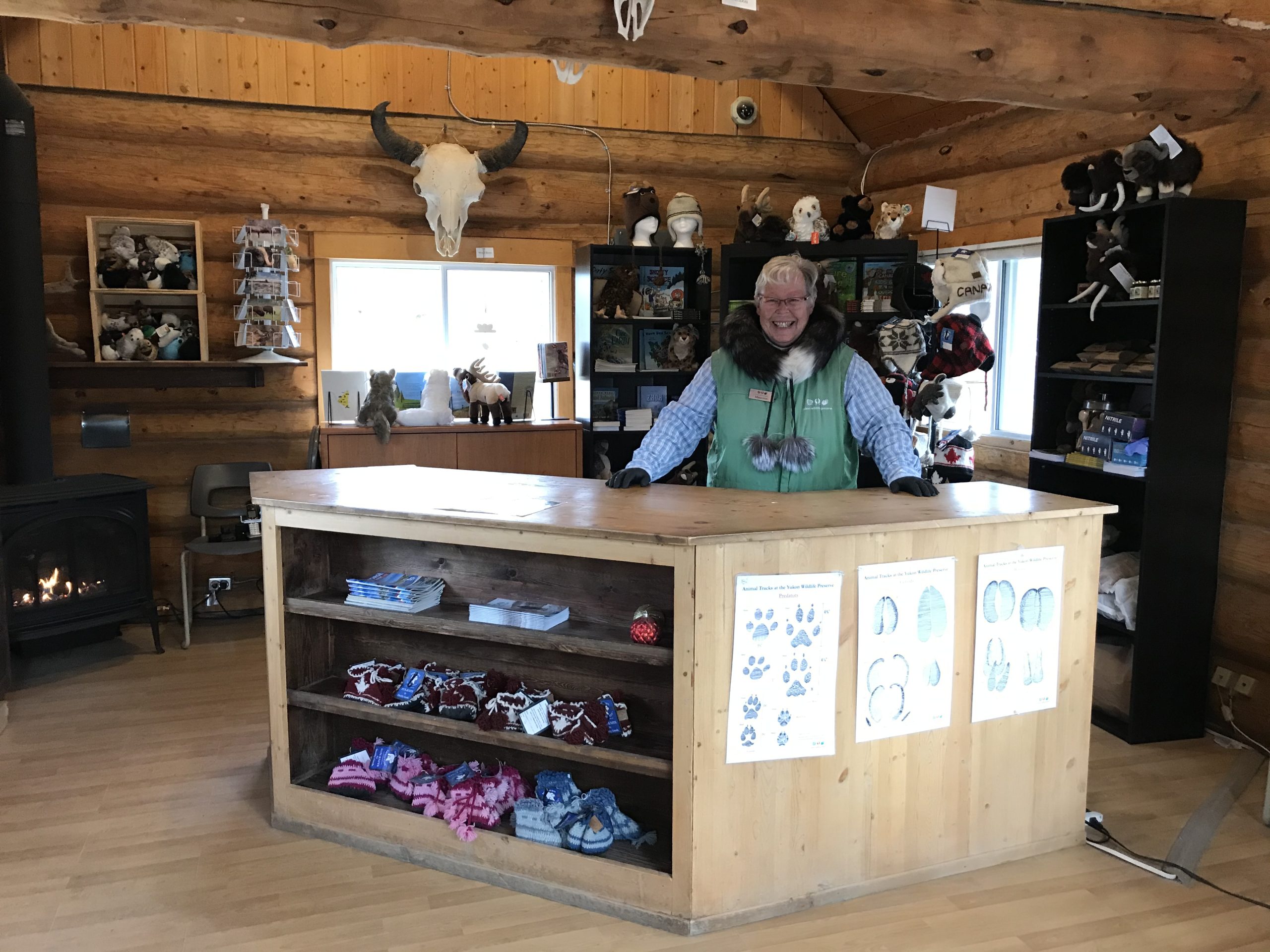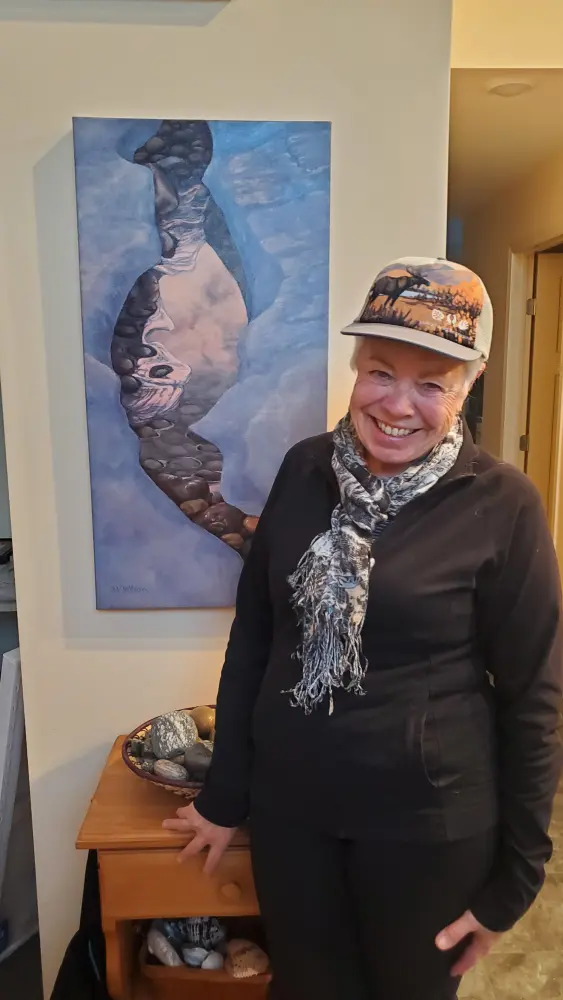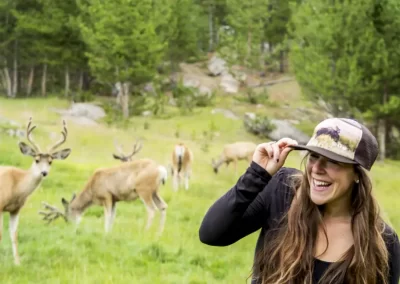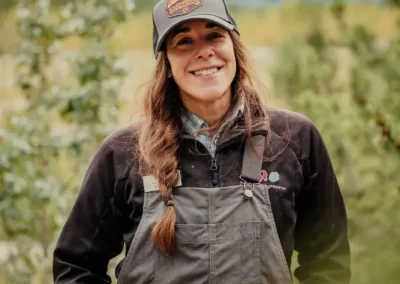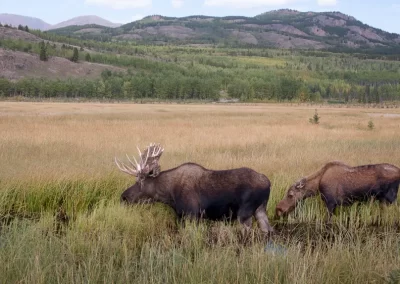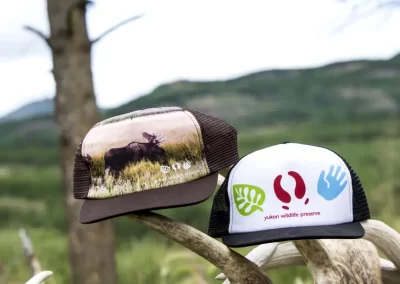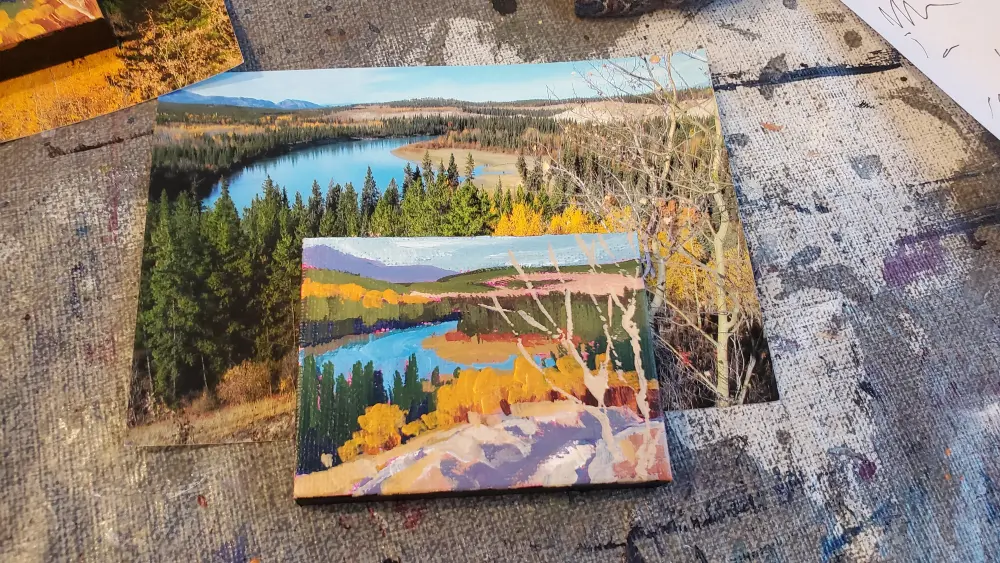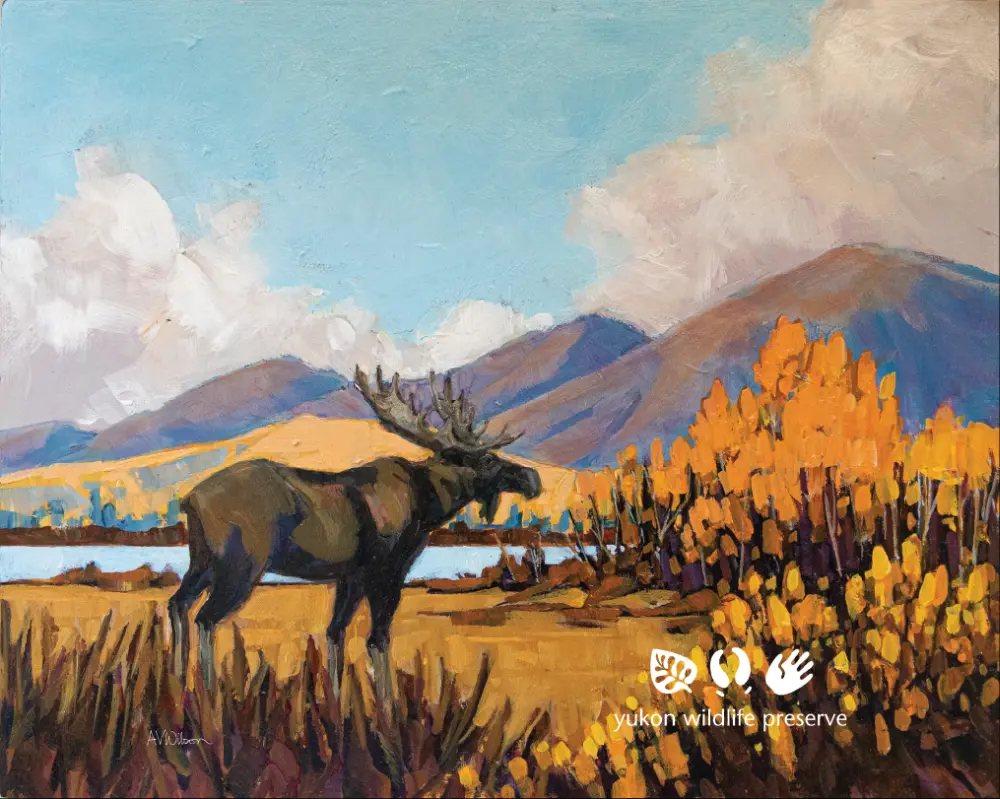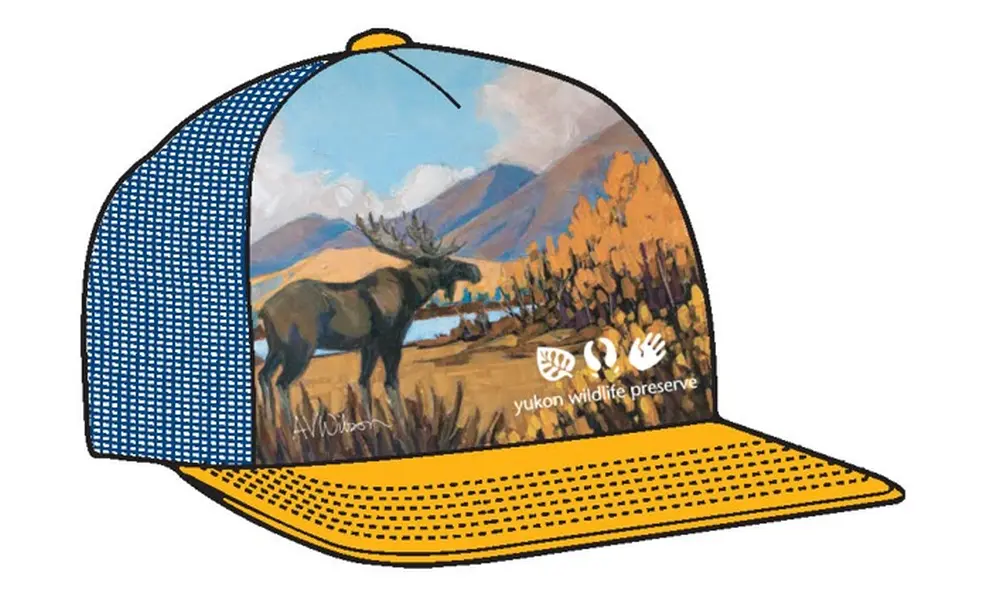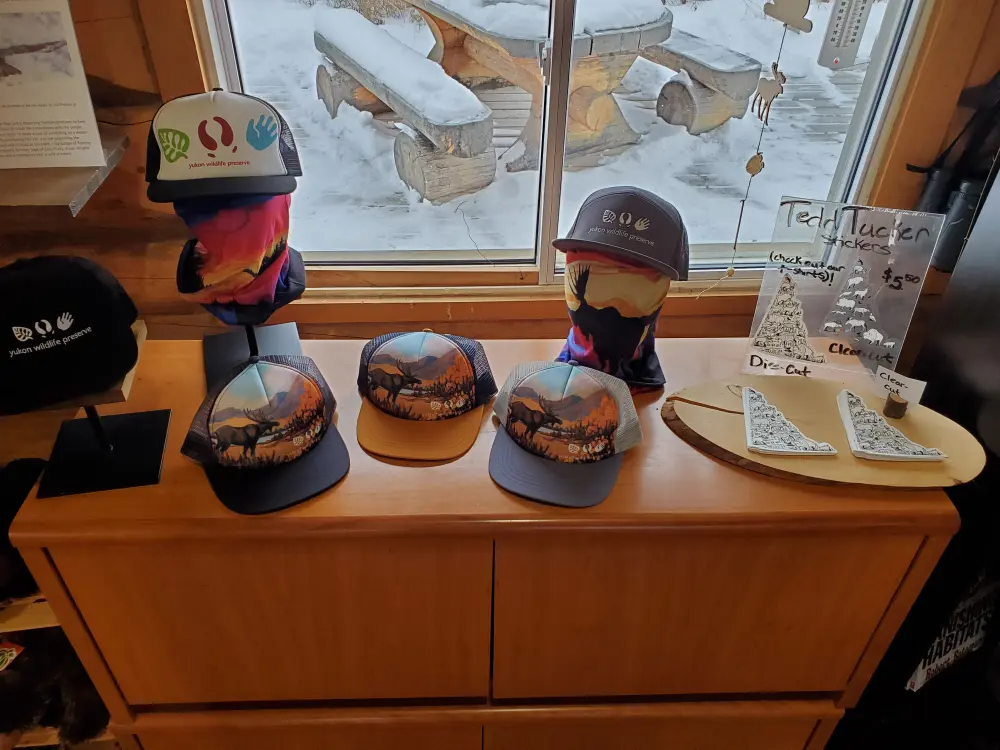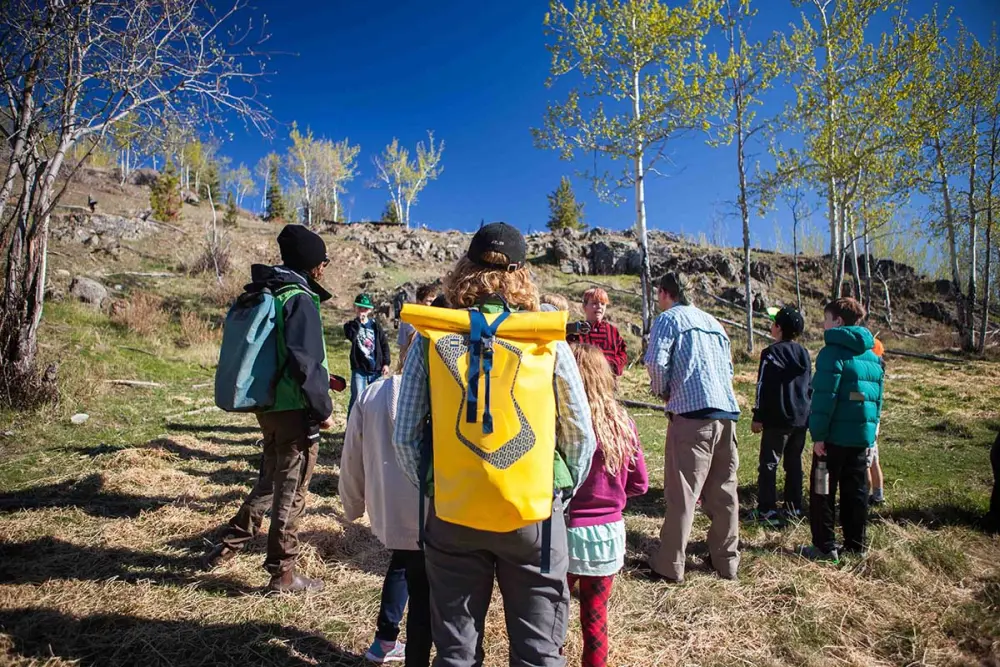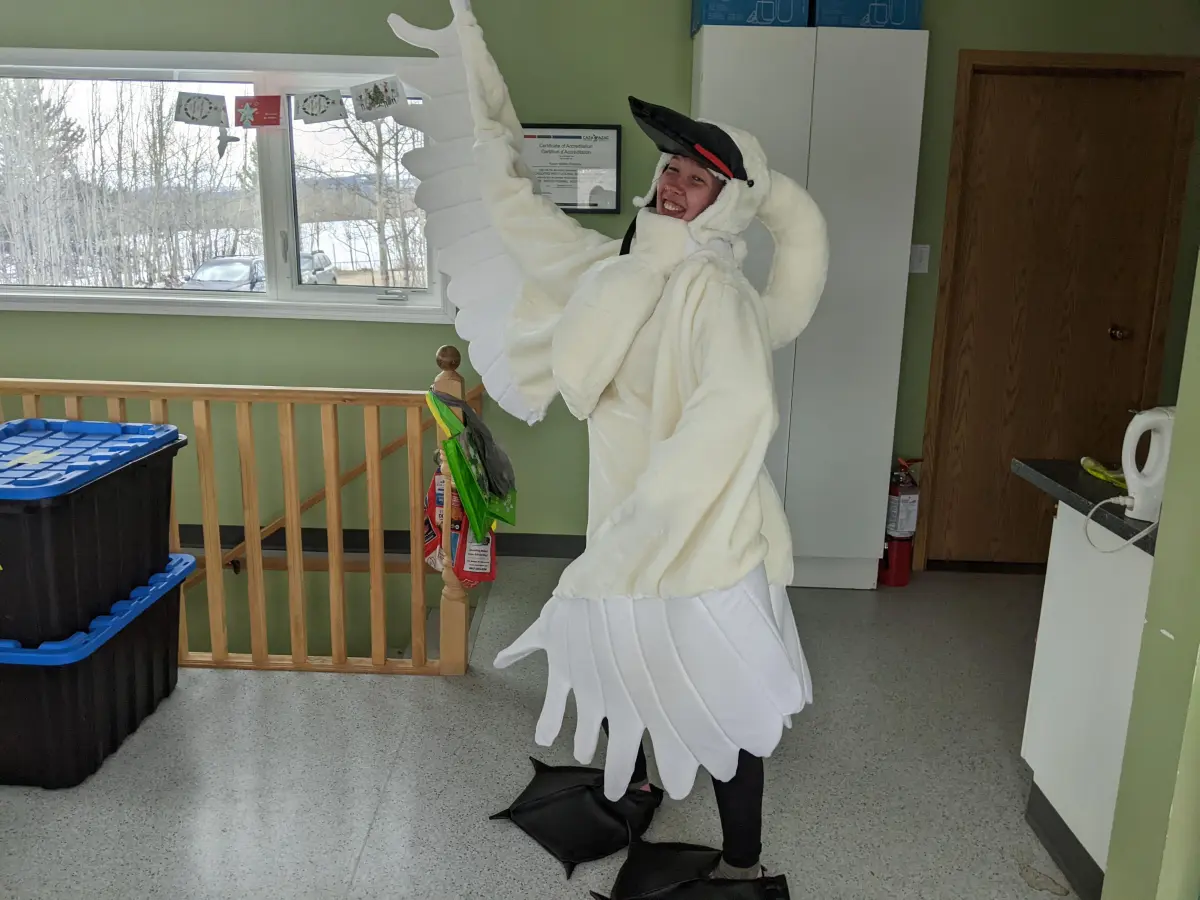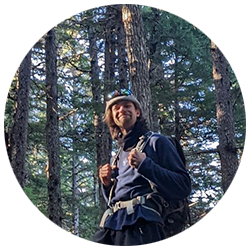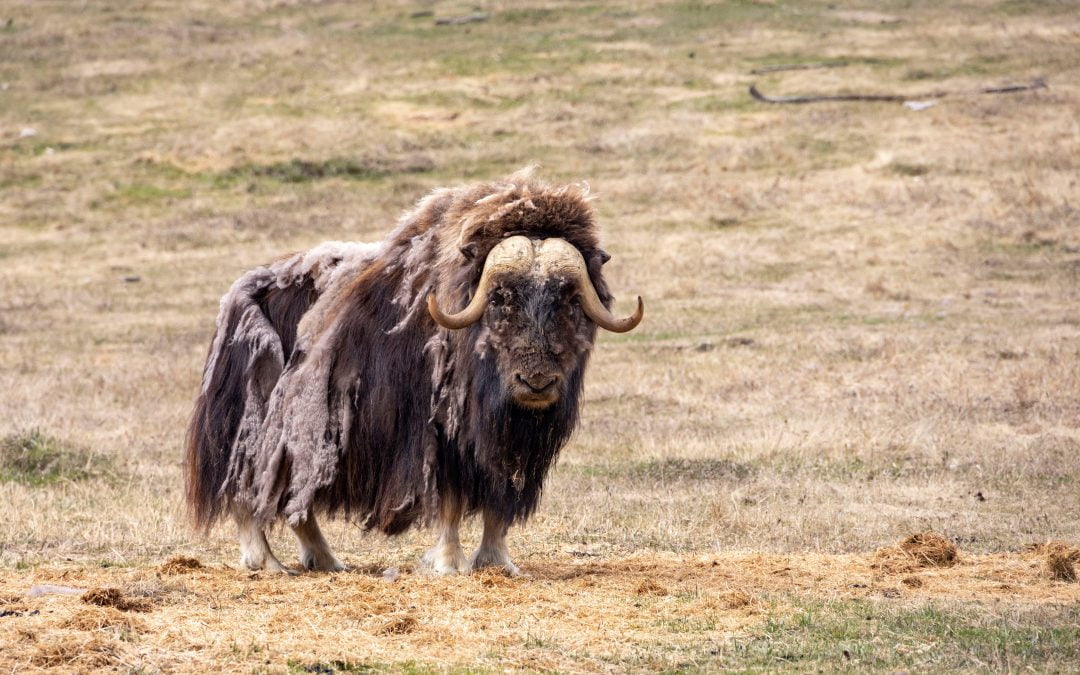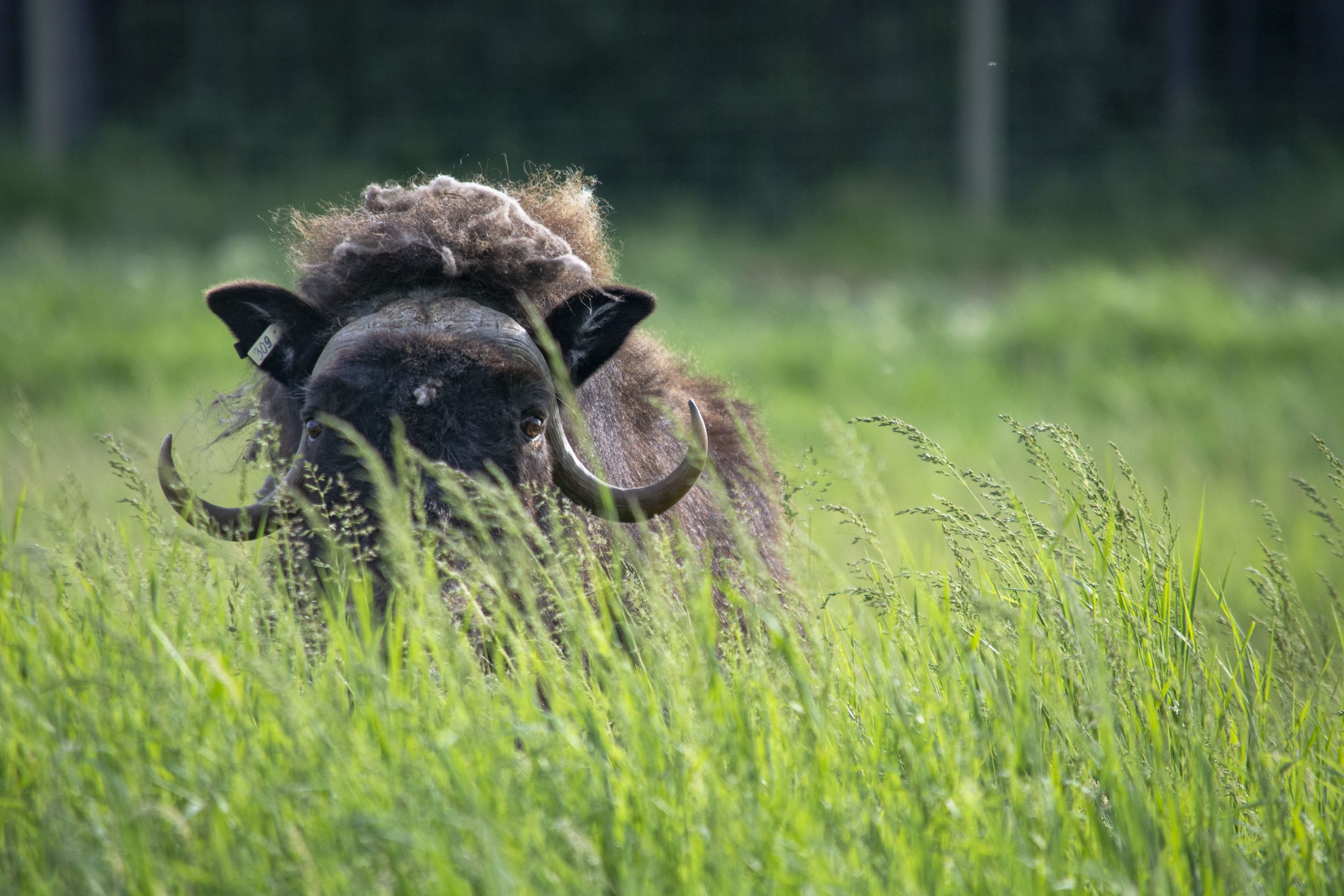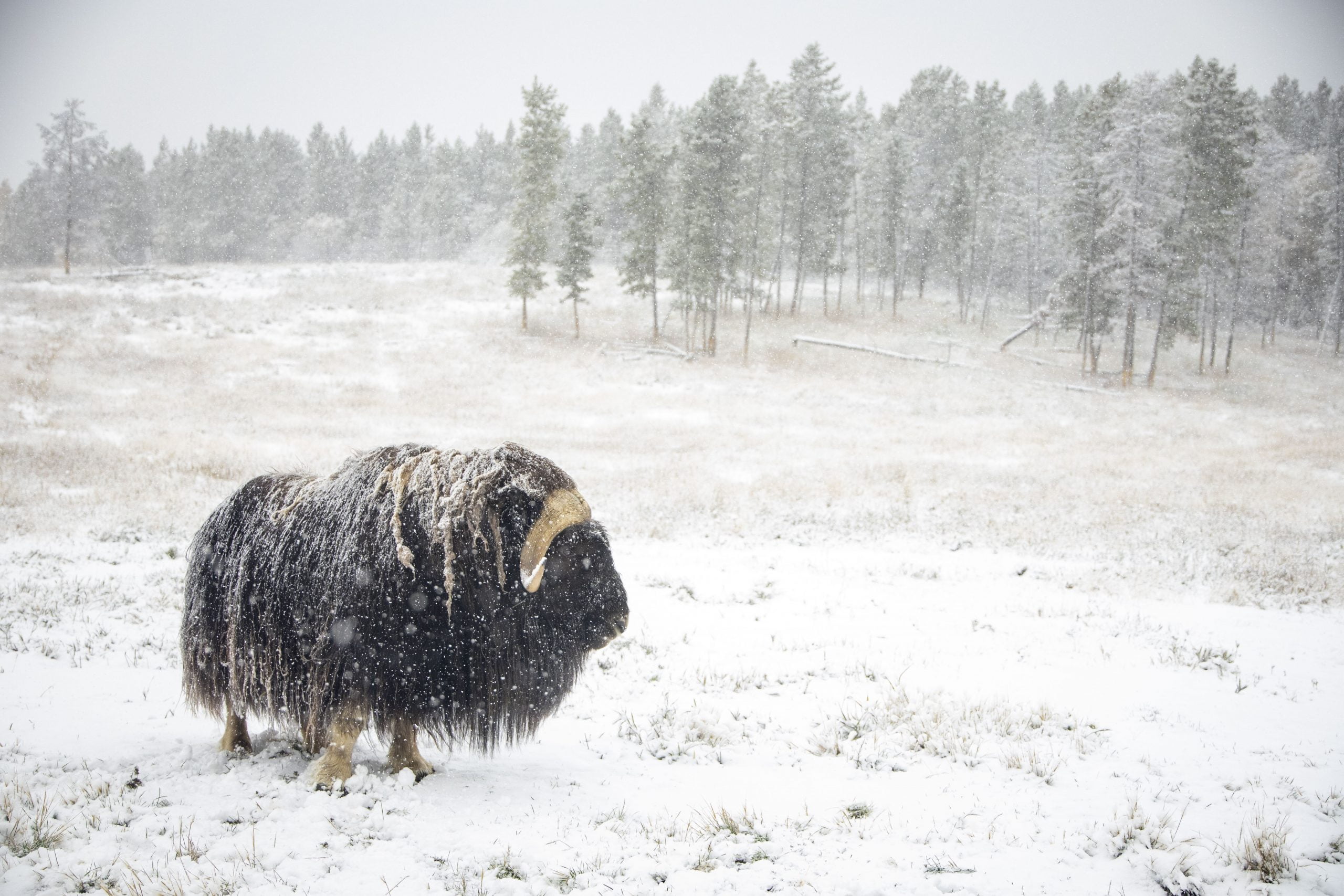
Bison vs. Muskox
Bison vs. Muskox
2 minute read –
Bison versus muskox! What’s the same? What’s different? Who is more cool? Top 5 reasons muskox and bison are NOT the same animal, at all.
One of the first animals visitors see when they explore the Preserve is bison. As folks continue to explore the Preserve they will later come upon another large, brown animal and often say, ‘hey, look bison again!” In fact, they are looking at muskox. Both animals in their appearance can look similar but they are indeed quite different!
Similarities:
- Both animals belong to the Bovidae family.
- These animals comprise the biological family of mammals that are cloven-hoofed and ruminants. A member of this family can be called a bovid.
- Both animals (and both males and females) have horns.
- While shape and size differ the basic structure is always that of a pair of simple bony protrusions without branches, and each covered in a permanent sheath of keratin.
- It’s a family affair.
- both species form herds, and their social structure often involves a dominant individual. With this grouping the species is usually polygnous.
- Safety is a game of numbers and larger groupings allow for greater protection of the herd than if they were solitary animals.
- The Holocene, Ice Age and Pleistocene – History.
- Both present day species, Ovibos moschatus and Bison bison athabascae were on the land during the Early Holocene (10,000 – 5,000). Both current day species were reintroduced in the Yukon.
Differences:
- Physical appearance
- Bison are bigger and heavier. Males can be almost twice the weight of a muskox. As an Arctic specialist and ice age survivor it pays for muskox to be compact. Don’t worry though, the biggest land mammal in North America is adapted well to survival in the North.
- Muskox have a lot of hair, everywhere! Two coats including an exterior, thick and long guard hair layer called their skirt – ’cause it goes down to the ground. Underneath that, a soft, extremely warm wool called qiviut, keep the muskox warm in the wild Arctic. Now, wood bison have a massive build, a pronounced hump on their shoulders and shaggy hair around their head, face and forelimbs.
- Horns grow differently – muskox sport almost mustache looking horns form on top of the head, with males having larger and denser helmet structure to absorb the headbutt actions that happen in rut season. On the other horn, er, hand . . . bison have horns grow from the sides of their head and quickly curve upwards.
- Bison are like wild cows, while muskox are more closely related to mountains goats.
- This is represented in subfamily observation where the muskox is classified under the Caprinae subfamily.
- What happened when the cow and the goat walked into the bar?
- Nothing – they wouldn’t be in the same place at the same time! Muskox are a narrow niche specialist, occupying the high arctic tundra of the Circumpolar North! Wood bison roam grasslands, forest and mountain slope environments across northwestern North America.
- Fight or flight?
- Bison choose flight – they will flee as a herd for safety when threatened.
- Muskox fight – they form a defensive circle with young inside and adults facing outwards. This behaviour makes sense given we know that muskox live in an arctic tundra environment. Fleeing would be a near endless, waste of precious energy.
- History is confusing but muskox are true Ice Age survivors.
- While wood bison were present during the Holocene it was a narrow window within this geological epoch that the Bison bison evolved from its predecessors Bison priscus (commonly known as Steppe Bison) and Bison occidentalis. Both subspecies of present day bison (plains and wood) are reintroductions to their current ranges.
- Muskox, Ovibos moschatus not only were present during the Holocene they were present during the Pleistocene. Muskox as we know them today – tundra muskox or Ovibos moschatus persisted alongside other Ice Age animals like the Helmeted Muskox and other large megafauna like Steppe bison, and mammoths but they did not go extinct!
We say the winner is, Muskox! They are cooler! What do you think?


Lindsay Caskenette
Manager Visitor Services
Lindsay joined the Wildlife Preserve team March 2014. Originally from Ontario, she came to the Yukon in search of new adventures and new career challenges. Lindsay holds a degree in Environmental Studies with honours from Wilfrid Laurier University and brings with her a strong passion for sharing what nature, animals, and the environment can teach us.

